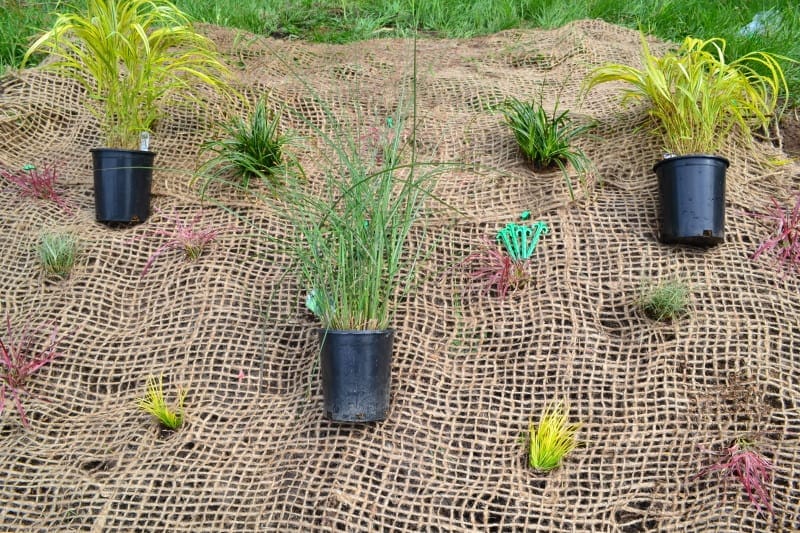- July 5, 2024
- Posted by: wellcoindustries
- Categories: Erosion Control, Jute Mesh
Introduction
Jute netting mulch is gaining popularity among gardeners and landscapers for its numerous environmental and practical benefits. Made from natural jute fibers, this eco-friendly mulch not only enhances the aesthetic appeal of your garden but also provides essential support for soil and plant health. In this article, we will explore the various benefits and applications of jute netting mulch, highlighting why it is an excellent choice for your gardening and landscaping needs.

What is Jute Netting Mulch?
Jute netting mulch is a natural product made from the fibers of the jute plant, a sustainable and biodegradable material. The netting is woven to create a strong, durable fabric that can be laid over soil surfaces. Jute netting’s natural properties make it an excellent choice for those looking to reduce their environmental footprint while improving garden aesthetics.
Environmental Benefits
One of the primary advantages of jute netting mulch is its environmental friendliness. Unlike synthetic mulches, jute netting is completely biodegradable, breaking down over time to enrich the soil with organic matter. This process improves soil structure and fertility, promoting healthier plant growth. Additionally, jute netting is effective in controlling soil erosion, making it an ideal choice for slopes and areas prone to water runoff. By retaining moisture in the soil, jute netting helps reduce the need for frequent watering, conserving water resources and supporting sustainable gardening practices.
Applications in Gardening and Landscaping
Jute netting mulch is versatile and can be used in various gardening and landscaping applications. It is commonly used for soil stabilization, particularly on slopes and embankments, where it helps prevent soil erosion and promotes vegetation establishment. In garden beds, jute netting provides a protective layer that enhances plant growth by maintaining soil moisture and temperature. Its natural appearance also adds a rustic charm to landscaped areas, blending seamlessly with the environment.
Economic Advantages
Using jute netting mulch can be economically advantageous in the long run. While the initial cost may be comparable to synthetic alternatives, the long-term benefits of improved soil health and reduced maintenance costs make it a cost-effective choice. Healthier soil leads to more vigorous plant growth, potentially reducing the need for fertilizers and other soil amendments. Additionally, the durability of jute netting ensures it provides effective soil coverage for an extended period, minimizing the need for frequent replacement.
How to Use Jute Netting Mulch
Installing jute netting mulch is straightforward and can be done with a few simple steps. First, prepare the soil by removing any weeds and leveling the surface. Next, roll out the jute netting over the area, cutting it to fit as needed. Secure the netting with biodegradable stakes or pegs, ensuring it is taut and in full contact with the soil. For best results, apply a thin layer of organic mulch over the netting to enhance moisture retention and decomposition. Regularly check the netting for any signs of damage and repair or replace as necessary to maintain its effectiveness.
Conclusion
Jute netting mulch offers a sustainable and practical solution for gardeners and landscapers looking to improve soil health, control erosion, and enhance the beauty of their outdoor spaces. Its environmental benefits, economic advantages, and ease of use make it a valuable addition to any gardening project. Consider incorporating jute netting mulch into your garden today and experience the numerous benefits it provides. Start your journey towards a greener, more sustainable garden with jute netting mulch now!
